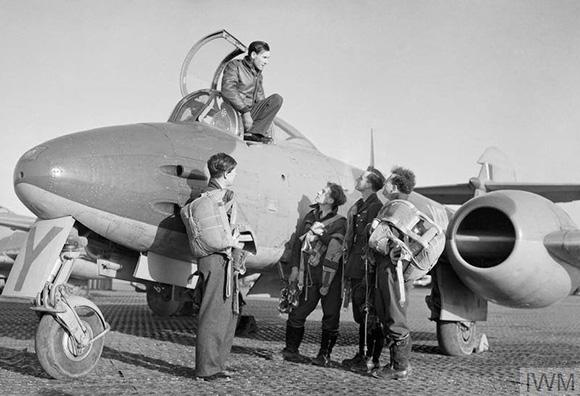Dennis Barry, the last pilot of the, died 616 South Yorkshire sqd., the pioneer squadron of the jet jets of the Royal Air Force that most of all helped defend England from Hitler's infamous flying bombs: the V-1.
Sprawled from the terrestrial ramps of the bases in the north of France and Belgium, the Fieseler Fi 103 - better known as V-1 - were propelled by an exoreactor and thanks to the gyroscope with which they were equipped, they went independently to England to transport their charge explosive of over 800 kilograms of Amatolo. As soon as they were intercepted by the radar the 'scramble' order was given to the squadron equipped with the latest versions of Supermarine Spitfire - who mounted the new Rolls-Royce 'Griffon' engines capable of pushing them up to 800 km / h - and those equipped with the first jet fighters used by the allies: the Gloster Meteor nicknamed "Meatbox".
The Meteor mk.III and IV, which were fitted with a pair of Rolls-Royce Derwent turbojets, could easily reach the cruising speed of the spinning bombs, once intercepted, and then blow them up in flight with the gusts of 4 Hispano guns 20mm housed on the sides of the muzzle.
At least one fifth of the 4000 flying and intercepted bombs may have been knocked down by the RAF hunt.
Barry, who ended his career as a Squadron leaders of the 616 sqd., had enlisted at the age of 19 years and was one of the first to fly on the RAF reactors. Before the missions to intercept Nazi retaliatory weapons, he flew over the Hurricanes and the Spitfire, take part in the risky strategic bombing missions that preceded D-Day: for this he was awarded by the French of Croix de Guerre avec Palme.












